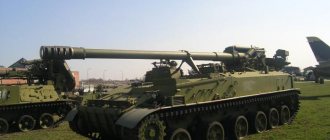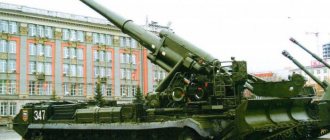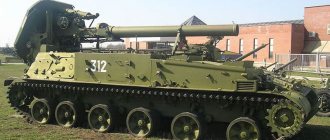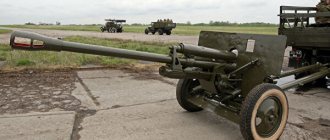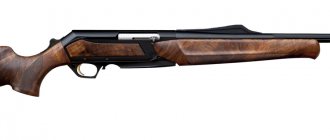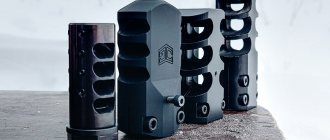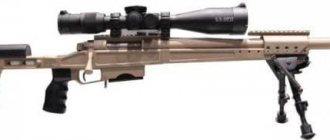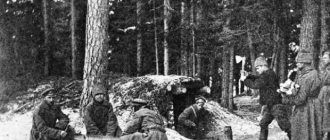Self-propelled gun 2S5 Giatsint-S 152 mm performance characteristics. Firing range. Armament. Dimensions. Weight
2S5 Giatsint self-propelled gun 152 mm - development began at the SKV Perm Machine-Building Plant in the winter of 1968 after a decree of the USSR Ministry of Defense on the need to create a new powerful 152 mm artillery mount. According to the instructions, the new self-propelled gun was supposed to surpass the 2SZ Akatsiya howitzer in terms of range, rate of fire and hit accuracy. From the very beginning, developments went in two directions: towed and self-propelled versions of the gun were designed and created - "Giacint-B" and "Giacint-S". Both guns had the same ballistics.
Reasons for appearance
Even the rapid development of aviation and missile technology did not remove large-caliber artillery systems from the category of priorities. Only during the short period of Khrushchev’s reign was an attempt made to rely on missiles to the detriment of cannon artillery. The re-equipment of the Soviet Army was associated with the need to replace weapon systems developed during the Patriotic War. Not all of them corresponded to the concept of use in the modern army. The saturation of troops with highly maneuverable armored vehicles, aircraft, and missile weapons contrasted with the slow-moving towed artillery systems that formed the basis of large-caliber artillery. Enemy forces also developed based on the concept of rapid massive impact. The time of active combat activity of a battery increasingly depended on the ability to quickly take positions for striking and the ability to evade a retaliatory attack. At the end of the sixties of the twentieth century, the development of the Hyacinth self-propelled artillery system began. New generation weapons fully meet modern challenges.
SAU 2S5 Giatsint-S - video
Ammunition for the guns was specially developed, since there were no rounds interchangeable with the Hyacinth in the Soviet Army yet. The first pilot batch of Giatsint-S vehicles was produced in 1976. Serial production of these self-propelled guns began almost immediately. The self-propelled gun is designed to fight heavy self-propelled artillery and enemy tanks, counter enemy batteries, destroy long-term firing points and field structures, as well as suppress the rear and control points of the opposite side.
The self-propelled gun received a tracked chassis similar to the 2SZ Akatsiya chassis. The vehicle is an open type, so the gun is mounted on the rear of the chassis without a turret. The Hyacinth is given additional stability by a folding base plate, so it is almost impossible to fire while moving.
2S5 has a relatively small size, so it is easy to transport, including by air. The armored hull protects the crew from bullets and shrapnel. The self-propelled gun has good cross-country ability and maneuverability, so it is easy to change its position. In addition, with the help of built-in bulldozer equipment, it is able to quickly dig a trench for itself. It takes only about 4 minutes to move from the traveling position to the combat vehicle.
The artillery part of the Giatsint self-propelled gun is a 152-mm 2A37 cannon, the barrel of which consists of a monoblock pipe, a breech and a muzzle brake screwed onto the pipe and absorbing recoil energy by 53%. The gun has a semi-automatic bolt. Refilling is carried out in two stages using an electrically driven chain rammer: the projectile, then the cartridge case. The use of a loading mechanism made it possible to increase the rate of fire of the gun to 6 rounds per minute. Its pointing angle in the horizontal plane is 30′, and in the vertical plane it varies from -2.5 to +58″.
The gun's ammunition includes 30 rounds of separate cartridge loading, including high-explosive fragmentation projectiles of a new type with an improved aerodynamic shape, active-reactive projectiles and adjustable "Krasnopol" with a semi-active laser homing system. According to Western printed sources, the vehicle's ammunition also includes a shot with low-power nuclear ammunition of 0.1-2 kt. In addition, completely new 152-mm shells are being developed in Russia. The gun's ammunition is located inside the body. Shells and charges are fed from the self-propelled gun manually, and an electromechanical machine completes the loading cycle.
The implement is equipped with sector lifting and rotating mechanisms, as well as a pneumatic pusher balancing device. The gun rotates using a machine mounted on a chassis pin. It also has a light shield that covers the gunner and part of the mechanisms from bullets, small fragments and the effects of a muzzle gas wave when firing. The gun is aimed using sighting devices, such as the BM-21 mechanical sight with a PG-1M panorama and the OP4M-90A optical sight.
The 2S5 “Gyacinth” has proven itself well during operation in units and performed well during combat operations in Afghanistan. Reliable, lightweight and mobile, it has repeatedly received good reviews at international arms exhibitions. Despite the fact that the gun is already somewhat outdated, it is nevertheless the longest-range Russian-made gun, second only to the 203-mm 2S7 Pion self-propelled gun.
Organizational structure
The 2S5 self-propelled gun entered service with artillery regiments and brigades of the combined arms armies of the USSR Ground Forces to replace the M-46 and M-47 guns. Each artillery brigade consisted of 5 divisions (4 cannon-self-propelled artillery and 1 reconnaissance), each artillery division consisted of three batteries. The artillery batteries consisted of six 2S5 self-propelled guns (a total of 18 guns in the division), but some divisions had 4 batteries of 6 152 mm guns or 3 eight-gun batteries (that is, 24 guns in the division).
Combat use
The 2S5 self-propelled gun received its baptism of fire during the war in Afghanistan. 152-mm high-explosive fragmentation shells made it possible to guarantee the destruction of any enemy fortification. They were used to a limited extent as part of battalion tactical groups in the First Chechen Campaign.
Shots used 2S5 Giatsint-S
After the ball"
If you think that in these market times, weapon designers have become less creative in terms of names, then you are very mistaken.
Article on the topic
The Ministry of Defense is waging a war with the domestic military-industrial complex. In 2008, the Russian army received a Russian mobile coastal missile system with an anti-ship missile of the X-35 type, the task of which is to protect the coast from enemy ships and landing forces. This formidable system is sublimely called “Ball”.
And so that an enemy spy can report to his superiors what awaits him in the event of aggression, we have military control systems that speak for themselves. Thus, the artillery fire control system is called “Kapustnik”, and the target designation system for anti-radar missiles is called “Phantasmagoria”.
So as long as domestic weapons are made by geniuses with the soul of poets, we will have great fun. That is, we have fun, but the potential aggressor is scared.
Performance characteristics of 2S5 Giatsint-S
— Layout: front-engine with open gun mounting — Developer: Uraltransmash, SKB-172 — Years of development: from 1967 to 1974 — Years of production: from 1976 to 1993 — Years of operation: from 1976 — Number of produced, pcs.: up to 2000
Crew: 5 people
Weight 2S5 Giatsint-S
— Combat weight, t: 27.5
Overall dimensions of 2S5 Giatsint-S
— Body length, mm: 8330 — Length with gun forward, mm: 8950 — Width, mm: 3250 — Height, mm: 2760 — Base, mm: 4635 — Track, mm: 2720 — Ground clearance, mm: 450
Reservation 2S5 Giatsint-S
— Armor type: bulletproof — Body forehead, mm/deg.: 30
Armament 2S5 Giatsint-S
— Caliber and brand of gun: 152 mm 2A37 — Type of gun: rifled semi-automatic gun — Barrel length, calibers: 47 — Gun ammunition: 30 — VN angles, degrees: −2…+57° — GN angles, degrees: − 15…+15° — Sights: PG-1M, OP-4M, TKN-3A
— Machine guns: 1 × 7.62 mm PKT
Firing range of 2S5 Giatsint-S
— 8 — 33.1 km
Engine 2S5 Giatsint-S
— Engine type: V-59 — Engine power, l. p.: 520
Speed 2S5 Giatsint-S
— Highway speed, km/h: 62.8 — Cross-country speed, km/h: 25–30
— Cruising range on the highway, km: 500 — Fuel tank capacity, l: 830 — Specific power, l. s./t: 19
— Suspension type: individual, torsion bar — Specific ground pressure, kg/cm²: 0.6
— Overcome ascent, degree: 30° — Overcome wall, m: 0.7 — Overcome ditch, m: 2.5 — Overcome ford, m: 1
Platform
The combat platform was developed by the Ural Transport Engineering Plant in the early seventies. The gun is installed openly on the armored self-propelled chassis of the Hyacinth installation, without a conning tower. A diesel engine with a capacity of 520 horsepower is installed in the front of the car. When moving, the gun crew is located in the body of the vehicle, protected by armor from one to three centimeters. When moving, the operator and gunner's positions are located on the sides of the vehicle, on both sides of the ammunition load. Behind the driver's hatch in the frontal part of the vehicle there is a commander's cupola equipped with surveillance and communication systems. A 7.62 mm machine gun is also installed there as a self-defense weapon.
Photo 2S5 Giatsint-S
2S5 Giatsint-S from the final stage of the All-Army competition of artillery units of motorized rifle brigades of the Fifth Army, held at the Sergeevsky training ground of the Eastern Military District in March 2013.
Similar
SAU 2S7 Pion (2S7M Malka) performance characteristics.
Caliber. Dimensions. Firing range of MLRS BM-21 Grad. Damage area. Rockets. Caliber. Story
120-mm mortar 2B11 complex 2S12 Sani TTX. Firing range. Weight
Mortar 2B9M Vasilek 82 mm Rate of fire. Firing range. Weight
Self-propelled gun 2S3 Akatsiya 152 mm. Firing range. Dimensions. Weight. Engine
SAU 2S1 Gvozdika 122 mm Firing range. Dimensions. Device. Weight
Gun 2A36 Giatsint-B 152 mm. Firing range. Dimensions. Device
MLRS 9K58 Smerch Damage area. Rockets. Caliber. Story
MT-12 Rapier gun. Firing range. Story. Dimensions
Howitzer D-30 122-mm performance characteristics. Firing range. Dimensions. Weight
2S4 Tulip self-propelled mortar 240 mm performance characteristics. Dimensions. Firing range. Weight
Self-propelled gun 2S35 Koalitsiya-SV 152-mm performance characteristics. Firing range. Dimensions. Weight
Howitzer Msta-B (2A65) 152 mm. Firing range. Dimensions. Weight. Ammunition
Self-propelled gun 2S9 Nona-S 120 mm performance characteristics. Firing range. Dimensions. Weight. Armament
AT-T heavy artillery tractor. TTX. Dimensions. Engine. Story
SAU 2S19 Msta-S 152 mm Dimensions. Speed. Engine. Story
MLRS 9K57 Hurricane Damage area. Rockets. Caliber. Story
TOS-1 Buratino (TOS-1A Solntsepek) performance characteristics. Damage area
Divisional gun ZIS-3 76 mm. TTX. Firing range. Dimensions. Weight
Howitzer gun D-20 152 mm performance characteristics. Firing range. Dimensions. Weight
Howitzer M-30 model 1938 122-mm performance characteristics. Firing range. Dimensions. Weight
Self-propelled gun 2S5 Giatsint-S 152 mm performance characteristics. Firing range. Armament. Dimensions. Weight
Self-propelled gun Ferdinand (Elephant) performance characteristics. Reservation. Weight. Dimensions
Self-propelled gun SU-100. TTX. Armament. Dimensions. Shells. Weight. Speed
Self-propelled gun Sturmtiger caliber 380 mm. TTX. Armament. Shells. Reservation. Dimensions
203-mm howitzer B-4 model 1931 performance characteristics. Weight. Ammunition. Dimensions
Self-propelled gun SU-152 St. John's wort 152 mm performance characteristics. Shells. Firing range. Dimensions. Weight
Gun M-46 130-mm performance characteristics. Firing range. Dimensions. Weight
Demining installation UR-77 Meteorite TTX. Armament. Dimensions
MLRS 9K51M Tornado-G. Rockets. TTX. Firing range. Dimensions
SAU 2S31 Vienna 120 mm. Firing range. Story. Dimensions. Weight
German self-propelled gun StuG III. Modifications. Dimensions. Armament. Weight
Guided projectile Krasnopol. TTX. Firing range. Dimensions. Price
Mortar Karl 600 mm and 540 mm performance characteristics. Firing range. Weight. Dimensions
Big Bertha 420 mm gun. TTX. Weight. Dimensions. Ammunition
Self-propelled gun SU-76. TTX. Dimensions. Reservation. Weight. Story
SAU 2S23 Nona-SVK 120-mm performance characteristics. Armament. Range and accuracy of fire. Dimensions
SAU 2A3 Condenser-2P caliber 406 mm Firing range. Armament. Dimensions. Weight
Mortar M-160 caliber 160-mm performance characteristics. Firing range. Ammunition. Dimensions
Airborne self-propelled gun ASU-57. Armament. TTX. Dimensions. Weight. Booking
Artillery complex A-222 Bereg 130 mm. TTX. Firing range. Ammunition
Howitzer BR-18 caliber 305 mm TTX. Firing range. Weight
152 mm howitzer D-1. Firing range. Dimensions. Weight. Device
Mortar M-240 caliber 240 mm. Firing range. Dimensions. Weight
Self-propelled gun SU-85. Ammunition. Reservation. Dimensions. Weight. Engine
Counter-battery radar Zoo-1 (1L219M). Range of control of firing positions. Device
SAU 2S25 Sprut-SD. Caliber. Story. Dimensions. Weight. Engine
Self-propelled gun 2S34 Hosta 120 mm. TTX. Dimensions. Firing range. Armament. Weight
Self-propelled gun ASU-85. Armament. Dimensions. Reservation. Weight
280-mm mortar Br-5 model 1939 Dimensions. Weight. Ammunition
Self-propelled gun 2A45M Sprut-B. TTX. Speed. Engine. Weight
Belarusian MLRS BelGrad. TTX. Firing range. Ammunition. Dimensions
S-23 cannon 180 mm caliber. Ammunition. Weight. Dimensions. Firing range
Self-propelled gun SAU SU-122. Dimensions. Armament. Reservation. Weight
Self-propelled gun Jagdpanther. Weight. Reservation. Dimensions. Armament
Multi-barreled self-propelled gun M50 Ontos. TTX. Armament. Dimensions. Booking
D-74 cannon 122 mm caliber. Firing range. Dimensions. Weight
Artillery tractor T-20 Komsomolets. Armament. Reservation. Dimensions. Weight
Artillery tractor YA-12. Dimensions. Weight. Load capacity. Engine
SAU ISU-122. Armament. Dimensions. Weight. Booking
RPU-14 (8U38) - rocket launcher
2K32 Deva - 82-mm self-propelled mortar system
MLRS BM-24 (T) 240 mm. Firing range. Dimensions. Weight. Engine
Artillery tractor Comintern. Load capacity. Dimensions. Weight. Engine
Self-propelled gun SU-122-54. Reservation. Dimensions. Weight. Firing range
MLRS BM-14-16. Armament. Dimensions. Weight. Firing range
Self-propelled gun Nashorn (Rhinoceros). Armament. Dimensions. Weight. Booking
BR-2 gun caliber 152 mm. Firing range. Dimensions. Weight
Self-propelled howitzer self-propelled gun PzH 2000. Firing range. Dimensions. Weight
BR-17 cannon 210 mm caliber. Weight. Firing range. Rate of fire
Self-propelled gun Vespe 105 mm. Armament. Dimensions. Reservation. Weight
Wheeled self-propelled gun GAZ-68 (KSP-76). Armament. Dimensions. Weight. Engine
Self-propelled gun Brummbar 150 mm. Armament. Dimensions. Weight. Booking
Heavy self-propelled gun SU-14. Reservation. Dimensions. Weight. Engine
Self-propelled gun SU-5. Armament. Reservation. Dimensions. Weight
Self-propelled gun AT-1. Reservation. Dimensions. Weight. Engine
Self-propelled gun SU-12. Armament. Reservation. Dimensions. Weight
Weapon placement
When moving, the gun is in the transport position, positioned horizontally along the vehicle body. When firing, it is transferred to a combat position with a tilt angle of up to 60 degrees vertically. The rollback of the gun is perceived not only by the body of the vehicle, but also by the aft support plate resting on the ground. During position changes, the base plate is raised hydraulically to the rear of the housing. The gun is fed with separately loaded shots using a semi-automatic system. In addition to delivering the cartridge case and projectile from the transportable ammunition rack in the vehicle body, it is possible to supply charges from the ground. For this purpose, the Hyacinth installation is equipped with an ammunition loader and a conveyor.
Prospects
It is assumed that the 2S35 “Coalition” will become the main weapon of individual artillery brigades, while the “Msta” self-propelled guns will be deployed as part of the artillery of motorized rifle and tank regiments. “Coalition”, even when using the same shells, has a range that is unattainable even for the modernized “Msta”, but the concept of “fire raid” was also implemented in the improved self-propelled gun 2S19M2.
Due to the increased rate of fire, it, like the 2S35, can quickly “work” on a target with a series of shots and immediately change position. At the same time, the “Coalition” is a more complex product to manufacture and operate, while the “Msta” has long been mastered at the factory and among the troops. In light of the abandonment of the BTR-90 and the curtailment of production, it is also likely that the 2S19 will remain the main Russian self-propelled gun longer than planned.
If wealthy Americans were forced to abandon the XM2001 self-propelled gun project, then it is quite possible that Russia, whose economy, alas, is not the most powerful in the world, will experience difficulties with the mass production of the Coalition.
Combat use
Due to the outstanding characteristics of combat power in the Soviet and Russian armies, the system was given the comic name “genocide”. The 2S5 “Gyacinth” passed its baptism of fire in Afghanistan with honor. His crews provided cover for transport and combat convoys and suppressed dushmans’ firing points. The chassis, which is the successor to the chassis of the legendary front-line SU-100, has proven itself well. In difficult mountainous conditions, it demonstrated high reliability and survivability, showing superiority over modern developments. After all, the T-64 tank with a chassis developed specifically for it had to be withdrawn from Afghanistan due to reliability problems. The end of the Afghan War did not mark the end of his combat biography. A self-propelled 152 mm gun was used during the suppression of resistance by Chechen terrorists. Also during the war in Ukraine, the 2S5 “Gyacinth” system was used. Photo and video materials indicate the use of large-caliber guns to shell cities in the Donetsk and Lugansk regions.
Modifications
A wheeled version of the self-propelled gun is under development, designated 2S35-1 “Coalition SV-KSh”. It differs from the main modification in that the uninhabited turret is mounted not on a tank chassis, but on a KamAZ-6560 truck, originally designed to accommodate anti-aircraft guns.
It was planned to put it into service simultaneously with the tracked Coalition, but there is still no information about the wheeled self-propelled gun.
Traditionally, self-propelled guns on a wheeled chassis have been used either by countries with a developed road network, or by those where such a design provides better mobility (for example, South Africa). It is likely that the wheeled “Coalition” will become the base for the announced coastal artillery complex, armed with the 2A88 howitzer.
It was believed that a pre-production batch of the 2S35 self-propelled guns was shown at the 2014 parade, and in the future the Coalition will use the chassis of the Armata platform. After the announcement that the production of "Armata" will be limited to the pilot batch, such a prospect looks doubtful.
